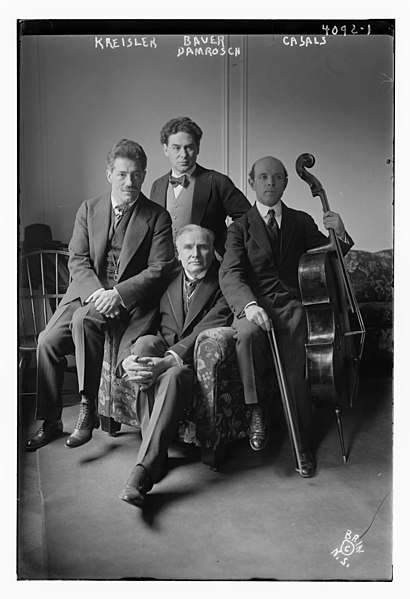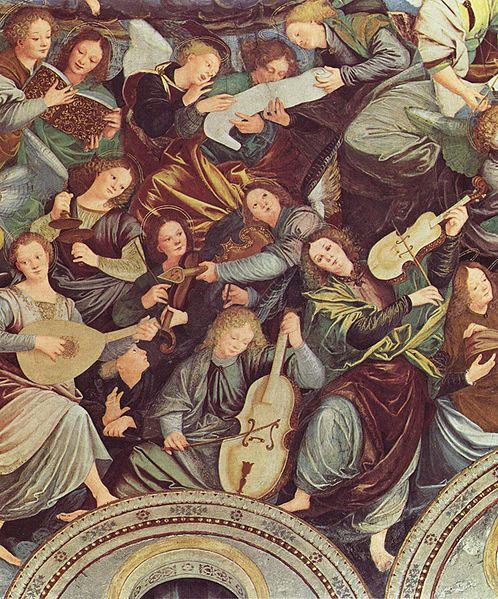Friedrich "Fritz" Kreisler was an Austrian-born American violinist and composer. One of the most noted violin masters of his day, and regarded as one of the greatest violinists of all time, he was known for his sweet tone and expressive phrasing. Like many great violinists of his generation, he produced a characteristic sound which was immediately recognizable as his own. Although it derived in many respects from the Franco-Belgian school, his style is nonetheless reminiscent of the gemütlich (cozy) lifestyle of pre-war Vienna.
Fritz Kreisler
Kreisler, Harold Bauer, Pablo Casals, and Walter Damrosch at Carnegie Hall on March 13, 1917
Time cover, February 2, 1925
The mausoleum of Kreisler in Woodlawn Cemetery
The violin, colloquially known as a fiddle, is a wooden chordophone, and is the smallest, and thus highest-pitched instrument (soprano) in regular use in the violin family. Smaller violin-type instruments exist, including the violino piccolo and the pochette, but these are virtually unused. Most violins have a hollow wooden body, and commonly have four strings, usually tuned in perfect fifths with notes G3, D4, A4, E5, and are most commonly played by drawing a bow across the strings. The violin can also be played by plucking the strings with the fingers (pizzicato) and, in specialized cases, by striking the strings with the wooden side of the bow.
The cupola of Madonna dei Miracoli in Saronno, Italy, with angels playing violin, viola, and cello, dates from 1535 and is one of the earliest depictions of the violin family.
1658 Baroque violin by Jacob Stainer
The construction of a violin
Closeup of a violin tailpiece, with a fleur-de-lis








